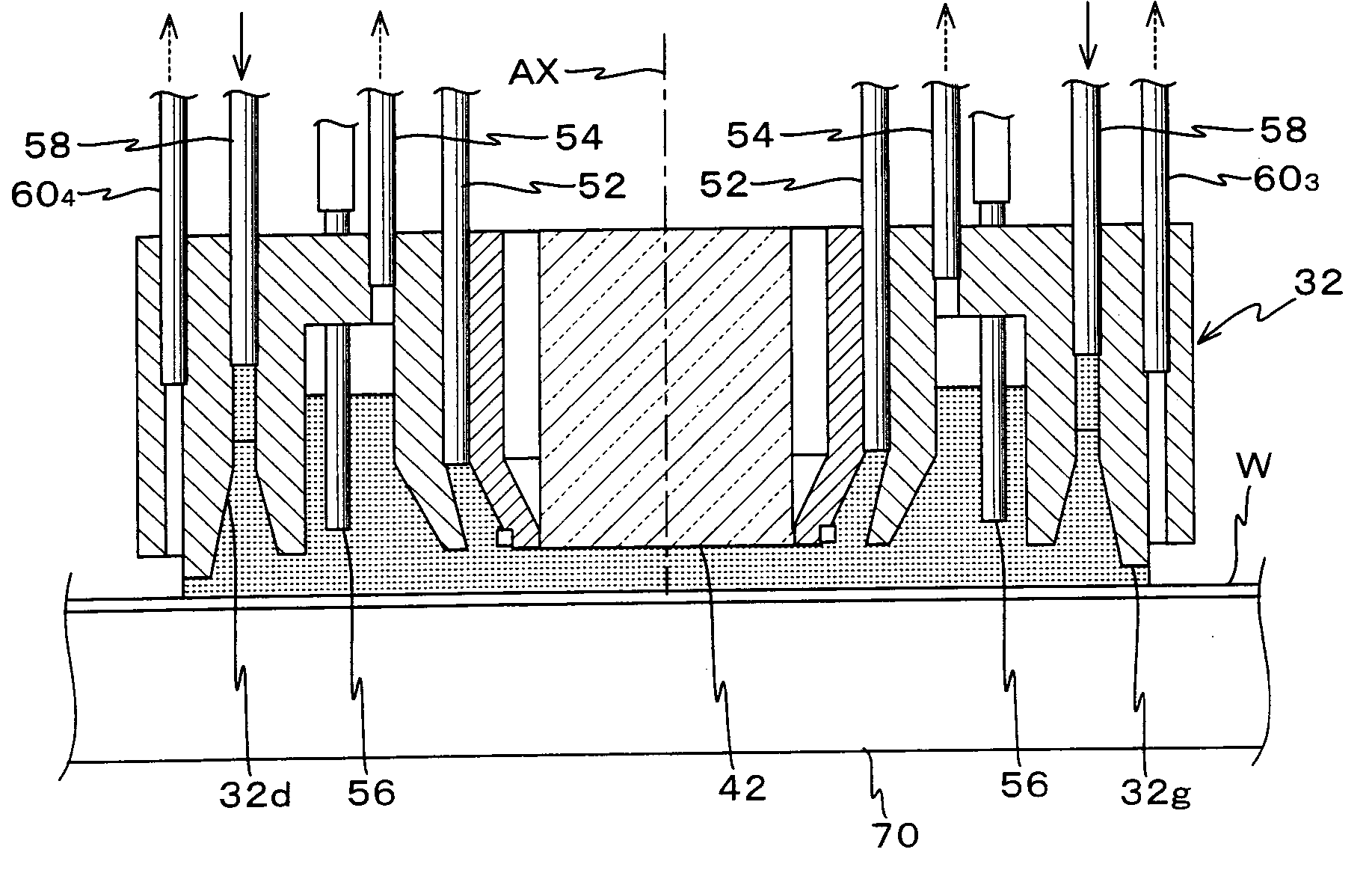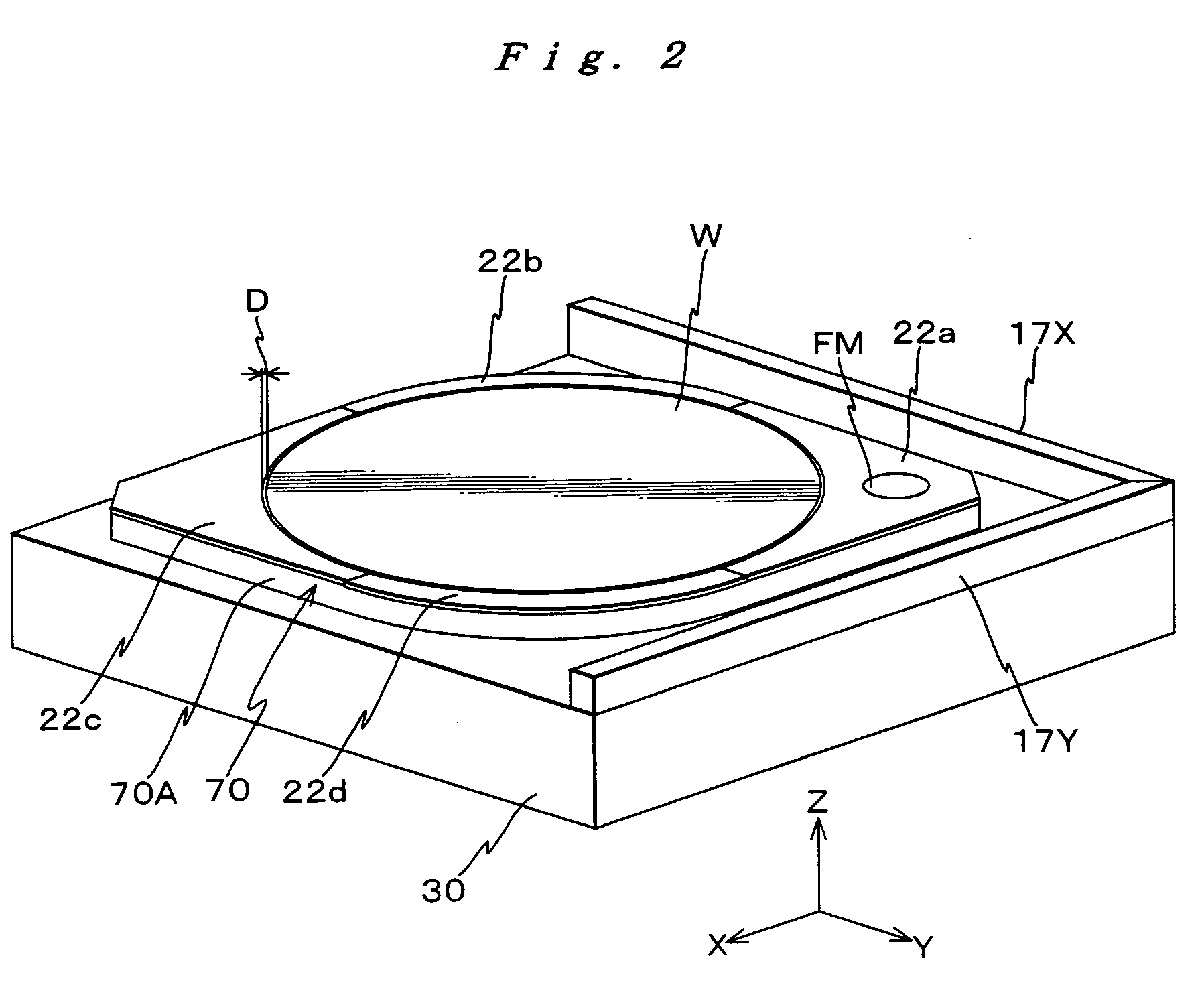Exposure apparatus and device manufacturing method
a technology of equipment and manufacturing method, applied in the direction of photomechanical equipment, instruments, printing, etc., can solve the problems of difficult to recover liquid completely, insufficient margin during exposure operations, and shortwavelength, so as to prevent the degrading of transfer accuracy, good accuracy, and pressure of water
- Summary
- Abstract
- Description
- Claims
- Application Information
AI Technical Summary
Benefits of technology
Problems solved by technology
Method used
Image
Examples
first embodiment
[0135] A first embodiment of the present invention is described below, referring to FIGS. 1 to 10B.
[0136]FIG. 1 is an entire view of an arrangement of an exposure apparatus 100 related to the first embodiment. Exposure apparatus 100 is a projection exposure apparatus, based on a step-and-scan method (the so-called scanning stepper). Exposure apparatus 100 comprises an illumination system 10, a reticle stage RST that holds a reticle R serving as a mask, a projection unit PU, a stage unit 50 that includes a Z tilt stage 30 on which a wafer W serving as a substrate is mounted, a control system for such parts, and the like.
[0137] As is disclosed in, for example, Japanese Patent Application Laid-open No. H06-349701 and its corresponding U.S. Pat. No. 5,534,970, the arrangement of illumination system 10 includes parts such as a light source, an illuminance uniformity optical system that includes an optical integrator or the like, a beam splitter, a relay lens, a variable ND filter, a re...
second embodiment
[0265] A second embodiment of the present invention is described below, referring to FIGS. 1A to 11F. For parts that have the same or similar arrangement as the first embodiment previously described, the same reference numerals will be used, and the description thereabout will be brief, or entirely omitted. The arrangement of an exposure apparatus in the second embodiment is similar to that of the first embodiment, other than the supply / drainage method of the water via liquid supply / drainage unit 32 by main controller 20. Accordingly, from the viewpoint of avoiding any repetition, the following description will be made focusing on the points different from the first embodiment.
[0266] In the exposure apparatus of the second embodiment, when operations other than the exposure operation based on the step-and-scan method is performed, more specifically, when wafer exchange and predetermined preparatory operations (reticle alignment, baseline measurement of the alignment detection syste...
PUM
| Property | Measurement | Unit |
|---|---|---|
| thickness | aaaaa | aaaaa |
| wavelength | aaaaa | aaaaa |
| refractive index | aaaaa | aaaaa |
Abstract
Description
Claims
Application Information
 Login to View More
Login to View More - R&D
- Intellectual Property
- Life Sciences
- Materials
- Tech Scout
- Unparalleled Data Quality
- Higher Quality Content
- 60% Fewer Hallucinations
Browse by: Latest US Patents, China's latest patents, Technical Efficacy Thesaurus, Application Domain, Technology Topic, Popular Technical Reports.
© 2025 PatSnap. All rights reserved.Legal|Privacy policy|Modern Slavery Act Transparency Statement|Sitemap|About US| Contact US: help@patsnap.com



